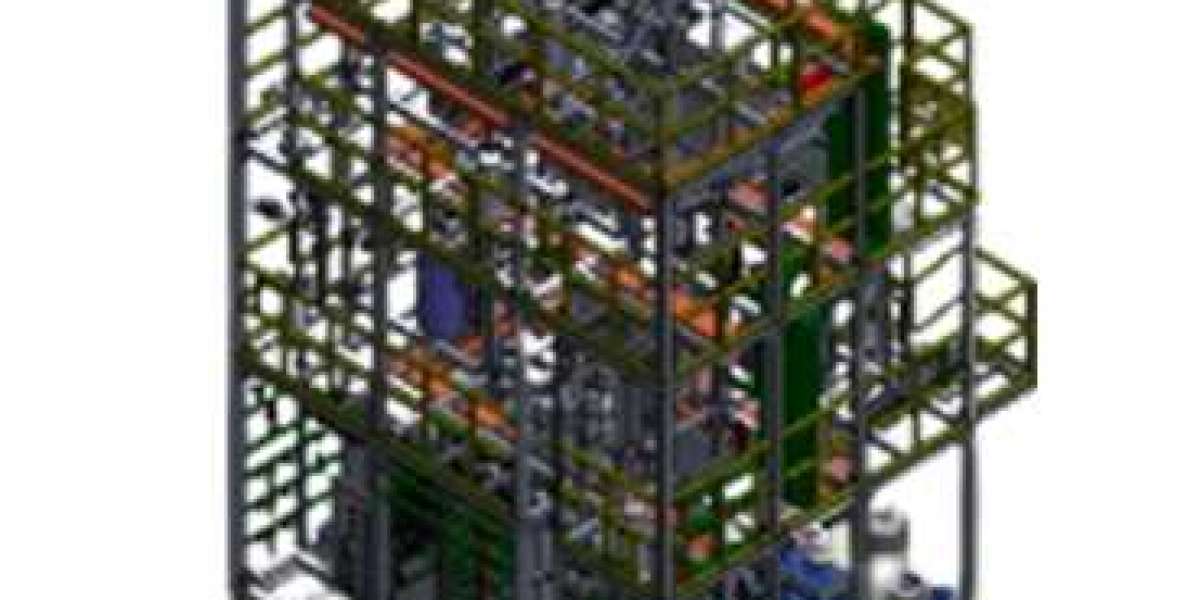Fluidized-bed units are widely used in various industries for their unique functionality and versatility. This article aims to provide a comprehensive understanding of fluidized-bed units, including their operation principles, types, advantages, and applications. By exploring the intricacies of fluidized-bed technology, we can appreciate its significance in enhancing process efficiency, promoting environmental sustainability, and enabling innovative solutions across different sectors.
Operation Principles of Fluidized-Bed Units
Fluidization Process:
Fluidization is the key principle behind the operation of fluidized-bed units. It involves the suspension of solid particles in a fluid, typically a gas or a liquid, to create a fluid-like behavior. This is achieved by passing the fluid through a porous medium, such as a bed of solid particles. As the fluid velocity increases, the drag forces acting on the particles overcome their weight, causing them to become suspended and exhibit fluid-like properties.
Fluidization Regimes:
Fluidized-bed units can operate in different fluidization regimes, depending on the fluid velocity and particle characteristics. These regimes include fixed bed, incipient fluidization, bubbling fluidization, turbulent fluidization, and fast fluidization. Each regime has distinct fluidization characteristics, such as bed expansion, particle mixing, and heat transfer rates, which influence the unit's performance and applications.
Types of Fluidized-Bed Units
Circulating Fluidized-Bed (CFB) Units:
CFB units are widely used in power generation and combustion processes. They feature a high gas-solid contact efficiency, allowing for efficient combustion of various fuels, including coal, biomass, and waste materials. The circulating nature of the bed particles enhances heat transfer and reduces emissions, making CFB units an environmentally friendly option.
Spouted Bed Units:
Spouted bed units are characterized by a high gas velocity that creates a spout or fountain-like flow pattern within the bed. This unique design enables efficient heat and mass transfer, making spouted bed units suitable for drying, granulation, and coating processes. They are commonly used in the pharmaceutical, food, and chemical industries.
Fluidized-Bed Reactors:
Fluidized-bed reactors are widely employed in the chemical and petrochemical industries for various reactions, such as catalytic cracking, hydrocracking, and polymerization. The excellent mixing and heat transfer capabilities of fluidized beds enhance reaction rates and selectivity, leading to improved process efficiency and product quality.
Advantages of Fluidized-Bed Units
Enhanced Heat Transfer:
Fluidized-bed units offer superior heat transfer compared to traditional fixed-bed systems. The continuous movement of particles in a fluidized bed ensures efficient heat distribution, reducing temperature gradients and hotspots. This feature is particularly beneficial in processes requiring precise temperature control, such as chemical reactions and drying operations.
Improved Mass Transfer:
The high gas-solid contact area in fluidized beds promotes efficient mass transfer, enabling faster reaction rates and improved product quality. This advantage is crucial in processes involving gas-solid reactions, such as combustion, gasification, and catalysis.
Flexibility in Particle Size and Shape:
Fluidized-bed units can accommodate a wide range of particle sizes and shapes, making them versatile for various applications. This flexibility allows for the utilization of different feedstocks, including irregularly shaped particles, powders, and granules, without compromising process efficiency.
Reduced Environmental Impact:
Fluidized-bed units contribute to environmental sustainability by reducing emissions and waste generation. The efficient combustion and gasification of fuels in fluidized beds result in lower pollutant emissions, such as sulfur dioxide and nitrogen oxides. Additionally, the ability to utilize low-grade and waste materials as feedstocks minimizes resource consumption and landfill waste.
Applications of Fluidized-Bed Units
Power Generation:
Fluidized-bed combustion technology is widely used in power plants for its ability to burn various fuels efficiently. The combustion of coal, biomass, and waste materials in fluidized beds produces steam, which drives turbines to generate electricity. This application offers a more sustainable and flexible alternative to traditional coal-fired power plants.
Chemical and Petrochemical Industries:
Fluidized-bed reactors find extensive applications in the chemical and petrochemical industries. They are utilized for various processes, including catalytic cracking, fluidized-bed gasification, and polymerization. The excellent mixing and heat transfer properties of fluidized beds enhance reaction rates, selectivity, and product quality, leading to improved process efficiency and reduced production costs.
Pharmaceutical and Food Industries:
Spouted bed units are commonly employed in the pharmaceutical and food industries for drying, granulation, and coating processes. The efficient heat and mass transfer capabilities of spouted beds enable rapid and uniform drying of pharmaceutical powders, granulation of food products, and coating of particles with functional coatings.
Environmental Remediation:
Fluidized-bed units are utilized in environmental remediation processes, such as soil and groundwater treatment. The ability to control temperature, gas composition, and residence time in fluidized beds allows for efficient removal of contaminants, such as volatile organic compounds (VOCs) and heavy metals, from contaminated media.
Conclusion
Fluidized-bed units offer unique functionality and versatility across various industries. Their ability to achieve efficient heat and mass transfer, accommodate different particle sizes and shapes, and reduce environmental impact makes them indispensable in power generation, chemical processes, pharmaceutical manufacturing, and environmental remediation. By understanding the principles and applications of fluidized-bed units, we can harness their potential to drive innovation, enhance process efficiency, and promote sustainable practices in diverse sectors.
E-mail:info@chem-unit.com
Fluidized-Bed Units: Transforming Food Processing with Fluidized Bed Device Dryers








